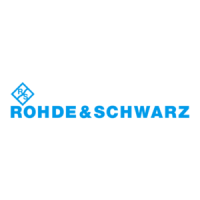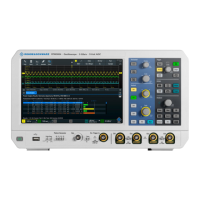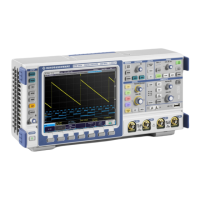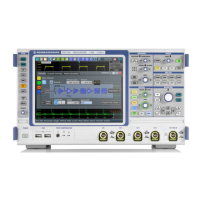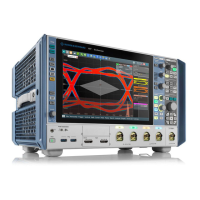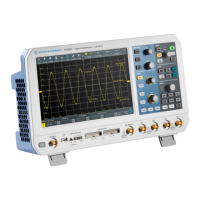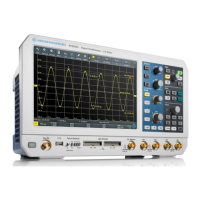Power analysis (option R&S RTM-K31)
R&S
®
RTM3000
360User Manual 1335.9090.02 ─ 09
Meas. type Sym-
bol
Description/Result
Mean Mean Mean value of the complete displayed waveform.
σ
σ
Standard deviation of the waveform samples.
Period T The length of the left-most signal period within the displayed section of the
waveform.
Frequency f Frequency of the signal. The result is based on the length of the left-most sig-
nal period within the displayed section of the waveform.
Pos. duty cycle Dty+ Positive duty cycle: Width of a positive pulse in relation to the period in %.
The measurement requires at least one complete period of a triggered signal.
Neg. duty cycle Dty- Negative duty cycle: Width of a negative pulse in relation to the period in %.
The measurement requires at least one complete period of a triggered signal.
Remote commands are described in Chapter 17.12.12, "Ripple", on page 739.
14.5.1.2 Configuring ripple measurements
For details of the configuration settings, see Chapter 14.5.1.3, "Ripple settings",
on page 361.
1. Press the Apps Selection key. Tap "Power Analysis".
2. In the "Output" tab, tap "Ripple".
3. Connect the differential voltage probe and the current probe to the oscilloscope.
It is recommended that you use a high-voltage differential probe for measurements
at the DUT power input.
4. Demagnetize the current probe. For details, see the user manual of your current
probe.
5. Select the "Tools" tab.
6. Connect the probes to the R&S RT-ZF20 power deskew fixture.
7. "Deskew" the probes and adjust the "Zero Offset".
8. Disconnect the probes from the R&S RT-ZF20 power deskew fixture.
9. Connect the probes to the DUT:
● Connect the voltage probe to the output stage of the DUT.
● Connect the current probe in flow direction of the current to the output stage of
the DUT.
10. Close the "Power Analysis".
11. Press the "Menu" button and scroll to the "Power" menu.
12. Select the correct channels for the "Source".
Output power measurements
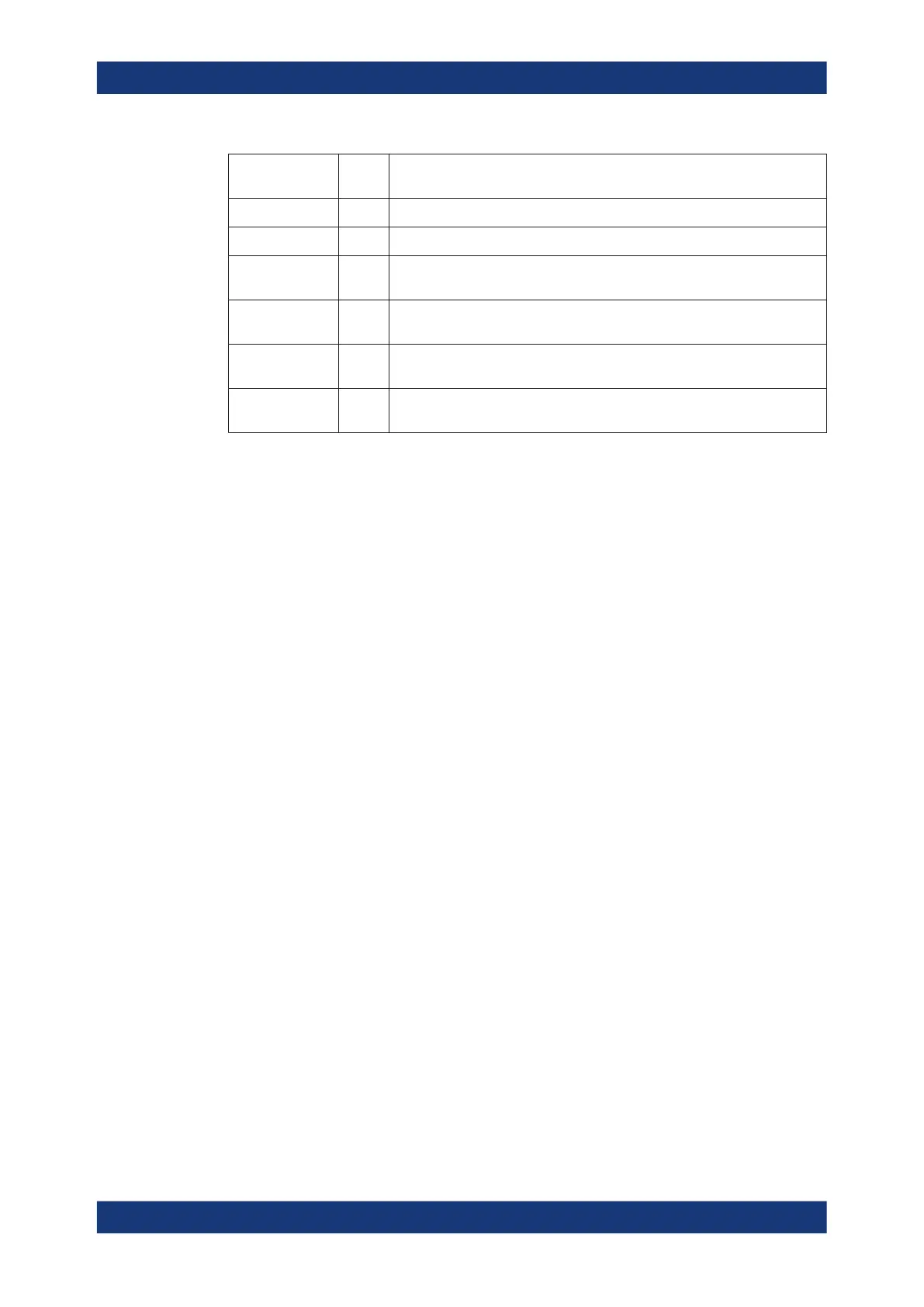